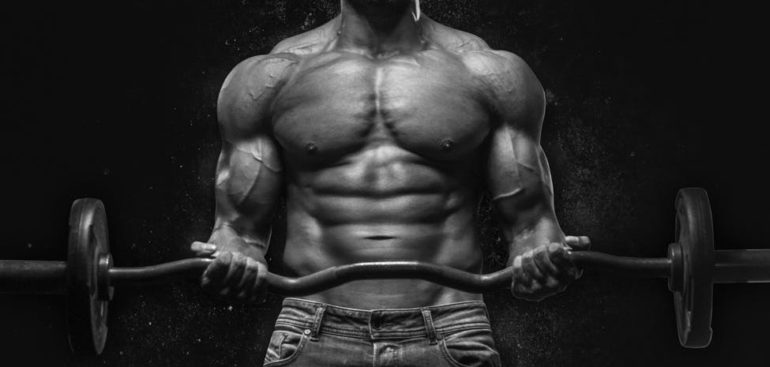Everyone is looking for THE ANSWER.
You often hear people ask “What’s the best move for biceps?” or “What’s the best exercise for abs?”.
Well, there is no such thing as ‘best’.
Why? You may ask.
Because the way you perform an exercise matters far more than which exercise you choose to do and that will be individually dependent.
You see, the answer is not a newly discovered supplement or a special advanced program.
The answer lies in mastering the basics: exercise execution.
Exercise Execution
Exercise execution is referred to the ability to consciously initiate and maximally contract the targeted working muscle through its entire active range of motion.
If your execution sucks, the likelihood of you building muscle is – low.
Most individuals create a mindset around going to the gym and “crushing it”.
Before you can apply hard work, you must know how to apply your efforts in the right direction.
How you train (execution) is much more important than what (exercise) you do.
Simply “lifting weight” is not going to get you the results that you are looking for.
There is more to it.
Proper execution takes focus and a basic understanding of how the body functions.
In order to maximally contract a specific muscle, your set-up must provide a stable platform for that muscle to contract.
Imagine trying to generate maximum force pulling a rope that has no attachment to either end. Not happening.
Stabilizing one side will allow the other side to generate maximum force.
When setting up for any exercise, focus on stabilizing your body to allow the working muscle groups to generate maximum force.
For instance, let’s take the barbell bench press. If your set-up does not provide maximum stabilization of your body, generating maximum force through the pecs will be impossible.
Ensuring that the shoulder blades aren’t moving and the body is stable as a whole will provide you the ability to utilize maximum pectoral recruitment.
Key things to focus on when performing any movement:
- Correct set-up for your body type
- Stabilize
- Isolate
Firing something from a stable platform will be very effective and efficient to contract any body part.
Main things to stabilize:
- Upper Body – Scapula and Core
- Lower Body – Pelvis
The amount of stimulus (sets, reps, rest, load) matters, but only once your form is 100% accurately directing tension to the working muscle.
There’s no logical reason to keep loading up the bar unless you are able to create a strong mind muscle connection during the movement. Your ability to direct the tension towards the desired muscle must be present first before increasing load.
For instance, let’s take the barbell row.
If you are not ‘feeling’ a strong engagement of your lats, rhomboids and mid traps throughout the movement with a naked bar (45 lb), loading up more weight will only make matters worse.
Before increasing load, master exercise execution.
Increasing the weight without proper form will only force your body to start using momentum, swinging and other unwanted mechanical advantages to lift that weight up.
Note* Weight lifting is about moving weight from point A to point B as efficiently as possible. Hypertrophy training is the exact opposite; it’s about moving weight from point A to point B (active range of motion of the muscle) as inefficient as possible in order to isolate and force that specific muscle to do maximum work.
Cheating (Improper form)
The body is designed to “cheat”. To get things done. Adding more weight to the bar, dumbbell or machine will often lead to changes in exercise execution – “cheating”.
Cheating may come in the form of unnecessary movement.
It may come in the form of shortened distance from the joint you’re trying to influence, or in the form of acceleration to propel more momentum.
In other words; increasing load without mastering exercise execution first may take away from the muscle’s active range of motion reducing total stimulus as well as using inertia rather than the actual muscle to move the weight.
Mindlessly moving weight from point A to point B will not optimally stimulate the muscle you are trying to target.
The body is primarily concerned with making everything as easy and efficient as possible.
Without conscious intent, the body will start using external mechanical advantages to get the job done.
Your dominant muscle groups will always eat the main course and the lagging body parts will get the leftovers, so-to speak.
This will lead to muscle imbalances, sub-optimal growth, minimal results and possible injuries.
Switch your thought pattern from external focus to internal focus.
Consciously think about what your muscles are doing rather than putting focus on moving the bar or hitting your target reps.
Note* As your ability to contract muscles improves, you may start increasing load.
To make progressive overload work in your favor, here’s how to utilize it:
- Improve Execution
- Enhance Mind Muscle Connection
- Increase Time Under Tension
- Add more Load (weight)
Conclusion
Most people only ever consider load.
Load is secondary to execution.
Adding more weight to the bar without concern for where it’s being placed is unavailing.
P.S. Having been working in a gym for many years now as a personal trainer in Toronto, most people jump straight into intensity without properly learning proper execution and correct movement patterns. Your results will be only as great as the direction of your efforts. Effort without direction is simply exhausting yourself.


